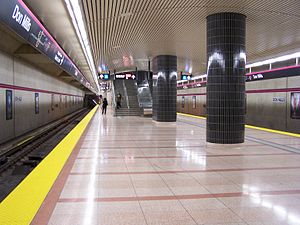The original Toronto area code of 416 is almost completely used up, and the newest area code for the city – 647 – only has about 2.5 million numbers left.
Canadian area codes typically have 7.5 million unique numbers.
So yesterday, the CRTC says that the Canadian Numbering Administrator – yes there is such a thing – is looking into the creation of yet another area code for the country’s largest city.
What gives?
There are about 2.5 million residents in Toronto -- 2,503,281 as of the latest 2010 Statistics Canada numbers to be official. The entire Greater Toronto Area (GTA) which includes the municipalities immediately surrounding the city (including Toronto’s population) is about 4.4 million people.
DO the math – Canadian area codes have 7.5 million numbers – wait a sec . . . the CRTC says we are running out of numbers, yet the population hasn’t met demand?
Guess some people just can’t put down their technological toys – some of us have two or more cell phones. It isn’t all that uncommon to have a cell for work and another for personal use. Some even have a different cell for their car.
Some people even have an old style cell phone and a smart phone. They keep their old phone because – well – I don’t really know – but they do – OKAY?!?!?
Why someone needs more than one personal communications device is beyond me. Unless you’re leading a double life.
That might be fun . . . or not . . .
Though we can’t blame the lone mobile phone or our new dependence on the BlackBerry and other smart phones for our overuse of the telephone system.
Many people have more than one landline-based phone at home – say a voice line and a fax line. Some people even get their teenagers their own landline, so that they never have to hear what my mom always yelled at me when I was a kid: “get off the phone!”
Offices and other businesses account for a huge toll in the telephone numbers game. According to a 2007 study at the time, there were 75,500 businesses in Toronto. Each business can have multiple numbers – so an office with a few hundred employees could have a few hundred voice numbers – or more.
And don’t forget facsimile machines. Although instant messaging and email have quickly become the dominant person-to-person communications systems thank to the Internet, most businesses still have fax capabilities. And for every fax machine, there are . . . JUNK FAXES.
It’s remarkable – and sad – that in this day of environmentalism, thoughts of greening the planet, and saving forests by using less paper, some businesses still think the best way to do business is by blasting their unwanted advertising to the masses by fax.
Some business leaders just aren’t very good leaders.
On average, most Canadians have three phone numbers – work, home and cell. So multiply 2.5 million by three, and you get 7.5 million – exactly the number of unique possible phone numbers in a Canadian area code.
Cool math.





![Reblog this post [with Zemanta]](http://img.zemanta.com/reblog_b.png?x-id=7fb1df3a-4ae5-46c9-8ff9-e302d0404379)



![Reblog this post [with Zemanta]](http://img.zemanta.com/reblog_b.png?x-id=3157568d-c3bc-40fc-b6df-44c606070e01)







